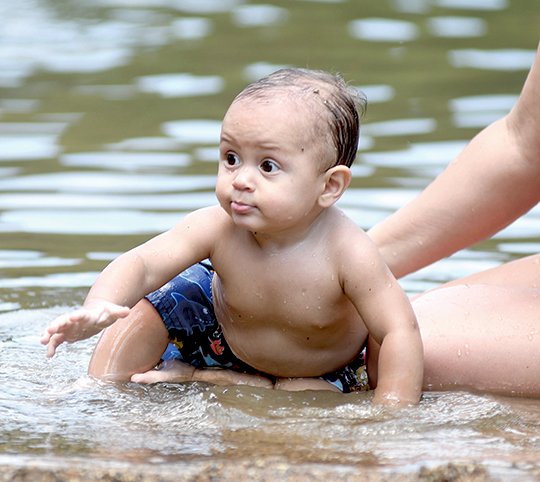Many of the people who will be out boating during the Fourth of July holiday cannot swim, so it's important they recognize their limits while on the water and take appropriate safety precautions, according to the U.S. Army Corps of Engineers.
"It's amazing to know how many people go out boating every year and they cannot swim at all. They think it will never happen to them; they're going to be in the boat, there's no reason they will fall out of the boat," said Brian Westfall, natural resources specialist with the Corps of Engineers' Ouachita Project Management Office. Westfall is also the immediate past president of the National Water Safety Congress.
"But something suddenly happens. Most boating fatalities are from very small craft, say 10 to 16 feet, and a lot of times they don't even have a motor on them. But something suddenly happens. They fall out of the boat. The boat hits something and throws them into the water. They just say they just never expected to be there, and all of a sudden they're there, they're not wearing their life jacket, and they go down," Westfall said.
"It's very important that you wear your life jacket while you're swimming, and that parents watch their children around the water, because it only takes 20 to 60 seconds to get in trouble in the water," he said.
"Most all fatalities are silent. There's very little yelling for help, at all. Many, many times, looking at drowning reports, the family was with the person. They were there one second, and then they were gone."
The best way to offset that risk is to wear a U.S. Coast Guard-approved life jacket and to have someone in the family watching after people swimming on beaches and boats, particularly boats that are rafted, where one craft is anchored and lashed together with other boats, usually by dock lines.
"A lot of times families gather together in their boats, and they swim around the boats, which generally is a fairly safe practice, unless they do it right in the main navigational channels," Westfall said.
"What we recommend is, if you're rafting up with other vessels, to do so in kind of a concealed cove, where you are not out in the boating lanes, and recommend that everybody who is around the raft of boats to wear a life jacket, because oftentimes ... they're all swimming around the boats and then all of a sudden they notice a member of their party is not present. They have gone under the water and drowned without them even knowing."
Some family members have actually watched their loved ones drown thinking they were playing in the water, according to Westfall.
"A drowning person does kind of the upside down breast stroke. Their arms are waving, and it kind of looks like they are playing in the water. Their head is back, and so they are attempting to breathe. When your head is back in the water, it's very hard to yell for help or talk, so they are mainly trying to breathe," he said.
"That situation goes on for just a few seconds, and after they panic their time above water is greatly reduced, and unfortunately then we're looking at a recovery versus a rescue. So, it's very important that families utilize the life jacket and watch their children very closely around rafted boats or in swimming areas."
Swimming on the remote shorelines of Lake Ouachita, while a popular pastime with some visitors, can be a dangerous activity because the depth of the water is unknown, along with potentially hazardous objects below the surface.
"We definitely recommend if you're going to swim at the lake, go to one of the designated swim areas. They are designed for swimmers, and they are quarantined away from the boating areas, so we do not have any boaters and swimmers together -- that's not a good combination."
The lake bed in the swim areas are graduated and do not have steep drop-offs, and are clearly marked, he said.
Westfall said he always recommends taking swimming lessons, because people are inherently poor swimmers, and as they age, it becomes an even more hazardous situation.
According to a Corps of Engineers water safety news release, the four signs of a drowning victim can resemble someone just playing in the water. They include head back, mouth open gasping for air, no yelling or sound, and arms slapping the water like they are trying to climb out of the water.
"Properly rescuing someone should never include contact with them unless you are a trained lifeguard. Reach out to the victim with something to keep your distance or throw them something that floats to pull them to safety," the release said.
Local on 07/01/2017
